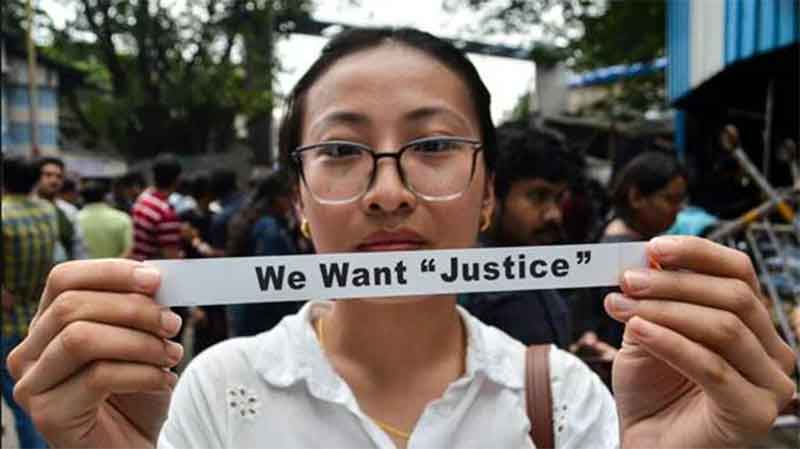
Introduction
World Health Organisation says that 8% to 38% of health workers suffer physical violence at some point in their careers. Recent surveys show that the percentage of doctors who experienced violence in workplace was 85% in China, 75% in India, and 47% in the US Assailants are mostly patients and their relatives. According to an ongoing study by the Indian Medical Association (IMA), 75% of doctors in India have experienced violence at some point in their lives, and most of the time it’s verbal abuse. Emergency rooms and ICUs are the most violent locations, and visiting hours are the most violent time. According to the World Health Organization (WHO), “violence is the intentional use of physical force or power, threatened or actual, against oneself, another person, or against a group or community. Violence can result in, or have a high likelihood of resulting in, injury, death, psychological harm, maldevelopment, or deprivation”.
Current scenario
Workplace violence in the health sector has been a subject of common concern around the world in recent years. It has become a global public health issue that severely endangers the health of medical workers and threatens the quality of medical services. Articles on medical violence published in the last decade tell the story of its importance and growing concern. In 2017, it was reported that nearly 75% of doctors in India have faced some form of physical or verbal violence during their lifetime. About 70% doctors feel unsafe while treating a patient. Violence usually occurs in casualty, outside intensive care units and post-surgical wards, where resident doctors managing critical patients become their primary targets. Violence could be in the form of verbal threats, physical assault, extortions, murder, vandalism or arson. As a result, medical professionals work under great stress, leading to problems like depression, insomnia, post-traumatic stress, fear and anxiety. The actual number of attacks of medical violence are much more than the reported figures. Doctors, particularly in government set-ups, are often flooded with patients. This leads to patient dissatisfaction as the doctors are not able to devote adequate time to each patient and their illnesses. Nayanar et al., (2019) study found that nearly half (48.1%) of doctors with 0–5 years of experience reported experiencing violence at work in the past 6 months. Another study carried out in Kerala discovered that there were 137 documented attacks on physicians in 2022. Respondents stated that violations occurred as a result of patient dissatisfaction, long waiting times due to inadequate staffing, improper communication, lack of medicines or other adequate facilities, and frustration with the healthcare system (Kunnath et al., 2023). Night shifts were also associated with an increased risk of violence, with 61.5% of doctors reporting violence during night shifts. The most common perpetrators of violence were patients (44.2%) and relatives (38.5%). Over half (53.8%) of doctors who faced violence said there was no violence prevention policy in their hospitals. Only 58.6% of doctors in corporate hospitals said there was a system in place for incident reporting. Another study found that healthcare professionals are four times more likely to be injured (and away from work) as compared to other professionals due to the growing medical violence (ILO, 2012).
Study also shows that night shift work, have a negative impact on health and well-being of workers as it can cause: disturbances of the normal circadian rhythms of the psychophysiological functions, beginning with the sleep/wake cycle; interferences with work performance and efficiency over the 24 hour span, with consequent errors and accidents; difficulties in maintaining the usual relationships both at family and social level, with consequent negative influences on marital relations, care of children and social contacts; deterioration of health that can be manifested in disturbances of sleeping and eating habits and, in the long run, in more severe disorders that deal prevalently with the gastrointestinal, neuro-psychic (chronic fatigue, anxiety, depression) and, probably, cardiovascular (hypertension, ischemic heart diseases) functions. Besides, shift and night work more specific adverse effects on women’s health both in relation to their particular hormonal and reproductive function, and their family roles. It has been estimated that about 20% of all workers have to leave shift work in a very short time because of serious disturbances; those remaining in shift work show different levels of (mal)adaptation and (in)tolerance, that can become more or less manifest in different times, and with different intensity (Costa, 1996). A recent survey by the Indian Medical Association showed that 82.7% doctors feel stressed out in profession, 62.8% fear violence, and 46.3% say violence is the main cause of their stress. Medical personnel who perform night shifts, especially female doctors, encounter security-related problems. It is discovered that this is frequently made worse by the private security personnel’ inadequate preparation. The situation is made worse by the need for increased public knowledge regarding the protection of medical personnel and the inadequate execution of the law. Therefore, medical violence ought to be treated by law as properly as any other form of violence against any other public servant when they are on duty.
Violence against medical professionals in recent years
The postgraduate trainee doctor was allegedly raped and murdered while on duty at RG Kar Medical College and Hospital on August 9. It was just another typical night for a postgraduate trainee doctor in her second year. She had dinner with her juniors and decided to go take some rest at 2 am, early morning. Due to a lack of rest space in the hospital, the doctor decided to go rest in the seminar hall, considering it safe to rest. Next morning when her body was discovered semi-nude inside a seminar hall on August 9, after she had been on duty the previous night. The autopsy report revealed that a possibility of a gang rape. Amid outrage over the incident, medics across the country have been protesting, seeking justice for the victim and legislation for better security at workplaces.
In India, violence against healthcare professionals is a startlingly frequent occurrence. Statistics show a trend toward increased hostility, especially in public hospitals. In the past few months, there have been numerous violent occurrences recorded in different States that have targeted medical workers, including doctors, nurses, and paramedics. Incident like a junior doctor in Agartala was threatened with physical violence by an enraged group of patients’ relatives. And a nurse in Andhra Pradesh was attacked with an iron rod by a patient’s relative. These occurrences serve as a stark reminder that violence is more common in public health settings and that younger and female practitioners are disproportionately affected by it.
Subscribe to Our Newsletter
Get the latest CounterCurrents updates delivered straight to your inbox.
Conclusion and suggestions
Violence against health professionals has a negative impact on their physical and mental health as well as their motivation for their jobs. Hospitals must have a standard operating procedure (SOP) in place to handle situations like this. Strict laws protecting the safety of medical personnel should be created with zero tolerance for medical violence. These laws ought to be clearly visible on hospital property to encourage individuals to consider their actions before they are taken. Doctors should be taught excellent interpersonal skills, self-defence, and effective interpersonal communication. Hospitals must have a security alarm system in place so that law enforcement can react to violent incidents quickly and have enough security guards to protect staff members. Establishments should have CCTV cameras with 24-hour trained observers, panic buttons, and better control of the entry into the emergency department. Social media can play a crucial role in stopping violence against medical professionals by raising awareness, promoting respect, and mobilizing public support. Through campaigns, real-time reporting, and educational content, it can create a sense of accountability and encourage positive behaviour toward healthcare workers. It is necessary to create strategies to effectively handle aggressive situations while still ensuring security in medical institutions. To assess the efficacy of these approaches, particularly in public health facilities with limited resources, more research is required. Laws prohibiting this kind of violence might be helpful.
References:
Nayanar, Bharath Sekhar; Fareed, Nusrath; Battur, Hemanth; Praveena, Jaseela. A Study on Nature of Violence Against Doctors in Tertiary Care Centers in Karnataka, India: A Cross-Sectional Study. Indian Journal of Community Medicine 49(3):p 472-474, May–Jun 2024. | DOI: 10.4103/ijcm.ijcm_1139_21
Statistics BoL. Non-Fatal Occupational Injuries and Illnesses Requiring Days Away from Work. Bureau of Labour Statistics, India, 2012
Costa G. The impact of shift and night work on health. Applied ergonomics. 1996 Feb 1;27(1):9-16.
Kunnath R, Thayyil J, Suresh N, Soman S. Workplace Violence Faced by Medical Doctors in Kerala, India. Cureus. 2023 Nov 16;15(11):e48887. doi: 10.7759/cureus.48887. PMID: 38111455; PMCID: PMC10726099.
Dr. Ajit Kumar Lenka currently working as an assistant professor department of Public Health, School of Allied Health Sciences, Noida International university. [email protected]














































